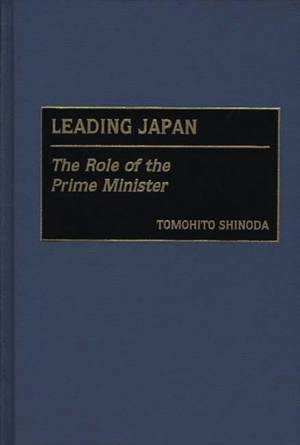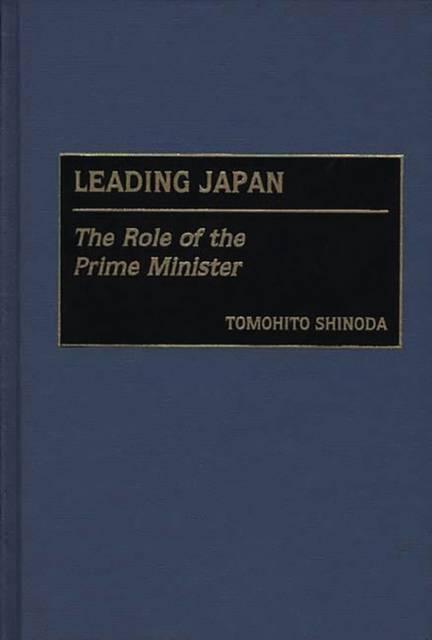
En raison d'une grêve chez bpost, votre commande pourrait être retardée. Vous avez besoin d’un livre rapidement ? Nos magasins vous accueillent à bras ouverts !
- Retrait gratuit dans votre magasin Club
- 7.000.000 titres dans notre catalogue
- Payer en toute sécurité
- Toujours un magasin près de chez vous
En raison de la grêve chez bpost, votre commande pourrait être retardée. Vous avez besoin d’un livre rapidement ? Nos magasins vous accueillent à bras ouverts !
- Retrait gratuit dans votre magasin Club
- 7.000.0000 titres dans notre catalogue
- Payer en toute sécurité
- Toujours un magasin près de chez vous
161,45 €
+ 322 points
Description
Shinoda provides an analytical framework for examining the role of the prime minister in Japan's political decision making. He shows that two dimensions of fraction within the government and the ruling party--interagency rivalry and intraparty factions--confront the prime minister whenever a major policy issue needs to be resolved. Despite these obstacles, Shinoda shows that the prime minister can be effective.
First, Shinoda identifies the sources of power available to Japanese prime ministers--some from legal authorities and others from informal sources. Because prime ministers must rely on informal sources of power to effectively utilize institutional sources of power, their effectiveness varies depending on their background, experience, political skills, and personality. Shinoda identifies six major informal sources of power: power base within the ruling party, control over the bureaucracy, ties with the opposition parties, public support, business support, and international reputation. The national leader's leadership style can be defined depending on which sources of power they utilize in the policy process. He presents both successful and unsuccessful case studies--Hashimoto's administrative reform, Takeshita's tax reform, and Nakasone's administrative reform-- illustrate how different prime ministers have succeeded or failed in applying their political resources. After examining these three case studies, Shinoda uncovers four types of leadership among Japanese prime ministers. A major analytical resource for scholars and students of Japanese politics and political economy and comparative politics.Spécifications
Parties prenantes
- Auteur(s) :
- Editeur:
Contenu
- Nombre de pages :
- 264
- Langue:
- Anglais
Caractéristiques
- EAN:
- 9780275969943
- Date de parution :
- 30-07-00
- Format:
- Livre relié
- Format numérique:
- Genaaid
- Dimensions :
- 162 mm x 241 mm
- Poids :
- 530 g

Les avis
Nous publions uniquement les avis qui respectent les conditions requises. Consultez nos conditions pour les avis.






